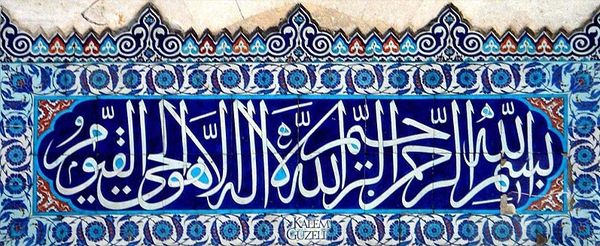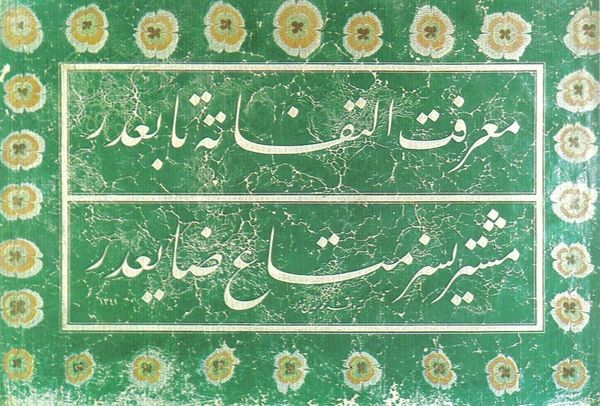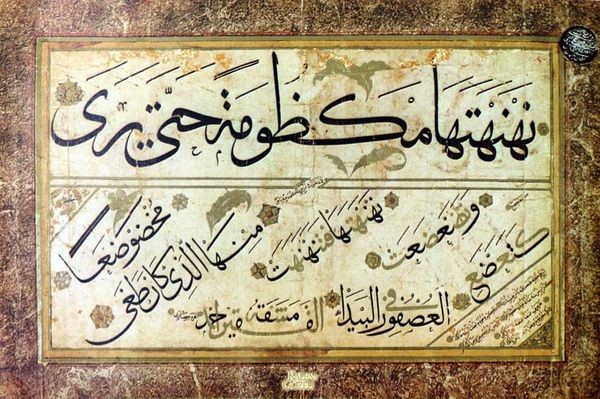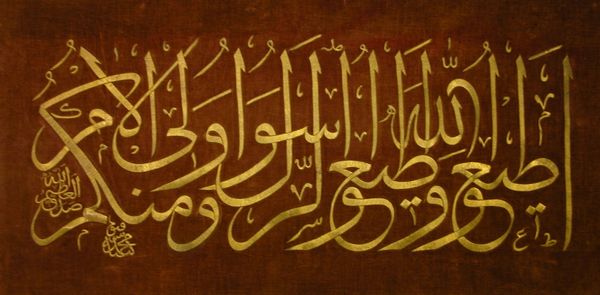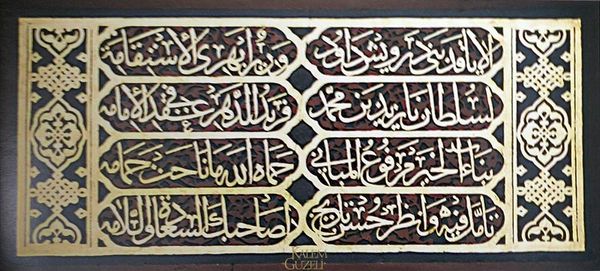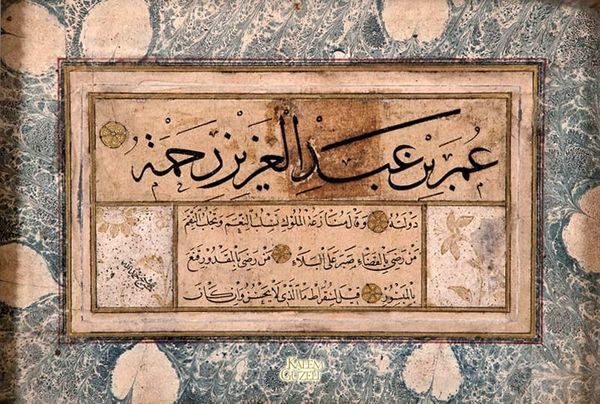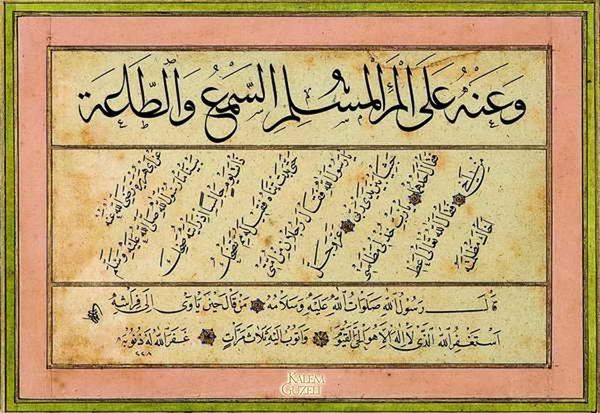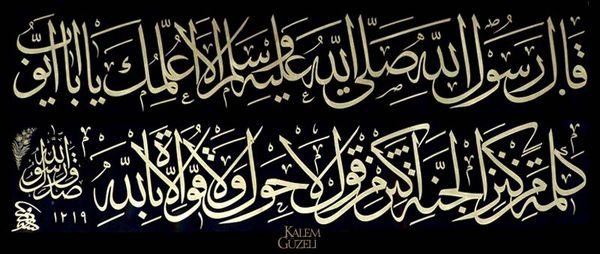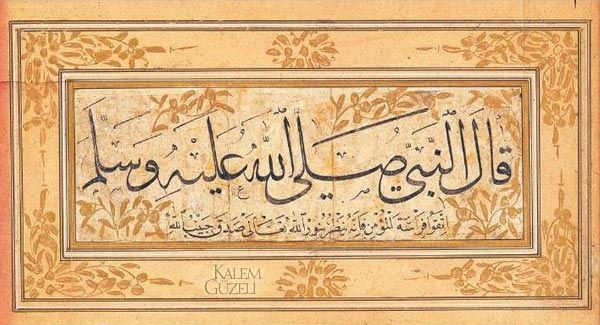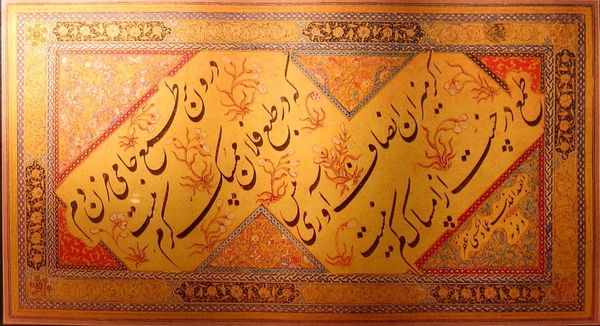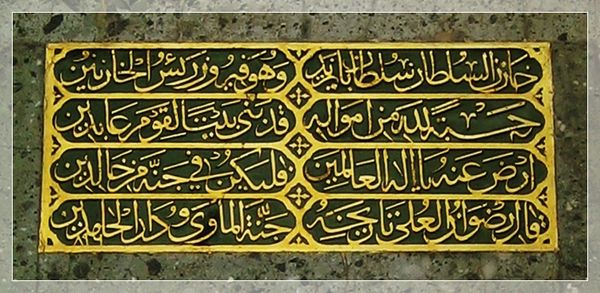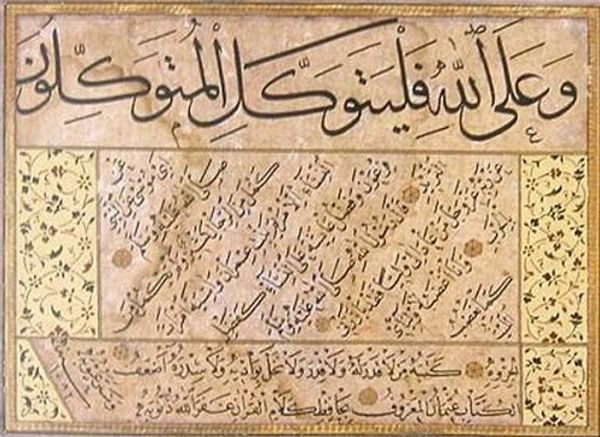
drawing, textile, ink
#
drawing
#
op art
#
textile
#
word art
#
ink
#
islamic-art
#
calligraphy
Copyright: Public domain
Curator: Immediately, I’m struck by how ornate the rendering is. What are your first thoughts? Editor: The precision! Look at those curves, the sharp points... I'm fascinated by the physical process of creating those precise calligraphic strokes. I imagine the artist hunched over it for days. Curator: Absolutely. This is "Kitabe," by Mustafa Rakim, using ink as the primary medium. The calligraphic art suggests a rich history bound in Islamic tradition. It really showcases the significance of text in Islamic art. Editor: The gold ink laid on, maybe even pressed onto what seems to be, textile is intriguing. How does its original context and production values influence its meaning in the wider social frame, displayed here in the museum? Curator: Well, Islamic calligraphy holds profound cultural significance. Beyond aesthetics, it represents sacred verses and acts as a form of worship, serving religious and scholarly purposes within Ottoman society. The cultural reverence for such skill elevates it beyond simple craft. Editor: Exactly. I am thinking about labor too. It's hard to separate form and function or what kind of art makes a mark, which one decorates and which one touches the very soul? I do believe the tension is there and is beautiful and useful. How else would a tradition survive? Curator: Indeed. The use of such an elegant material underscores its value as a symbol of status and taste for its patron. Art patrons like Sultans ensured the continuation of the art form through commissions that brought spiritual and earthly prestige. Editor: But it is all the ink, isn't it? A dark almost sombre backdrop versus gold calligraphy which suggests the means. Its luxurious materials can speak to the vast wealth that fueled the commissioning of artwork like these, underscoring an intricate link between artistic production and the socio-economic structures that gave rise to them. Curator: An eloquent testament to faith, craft, and power converging through history. Thank you. Editor: Thanks, It always makes you wonder about the makers, doesn't it? About those nimble fingers? About their lives.
Comments
No comments
Be the first to comment and join the conversation on the ultimate creative platform.

